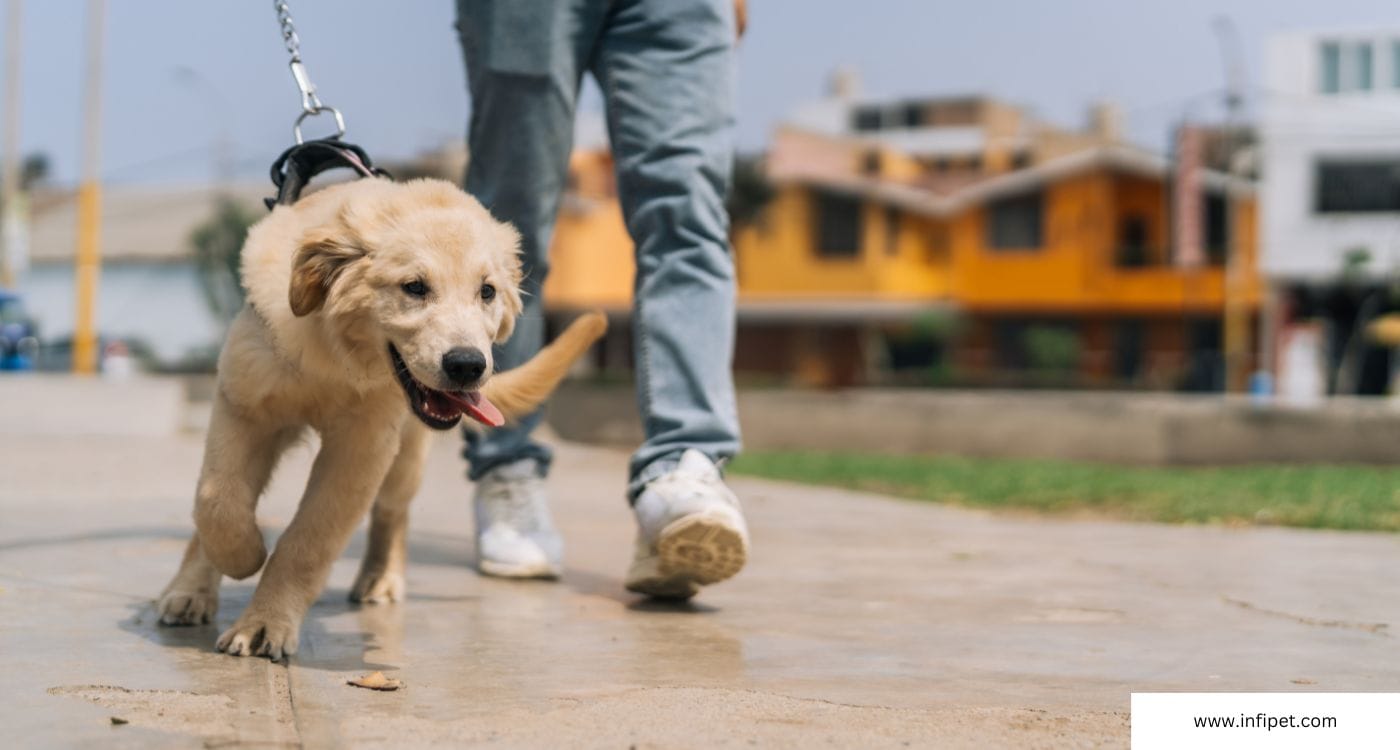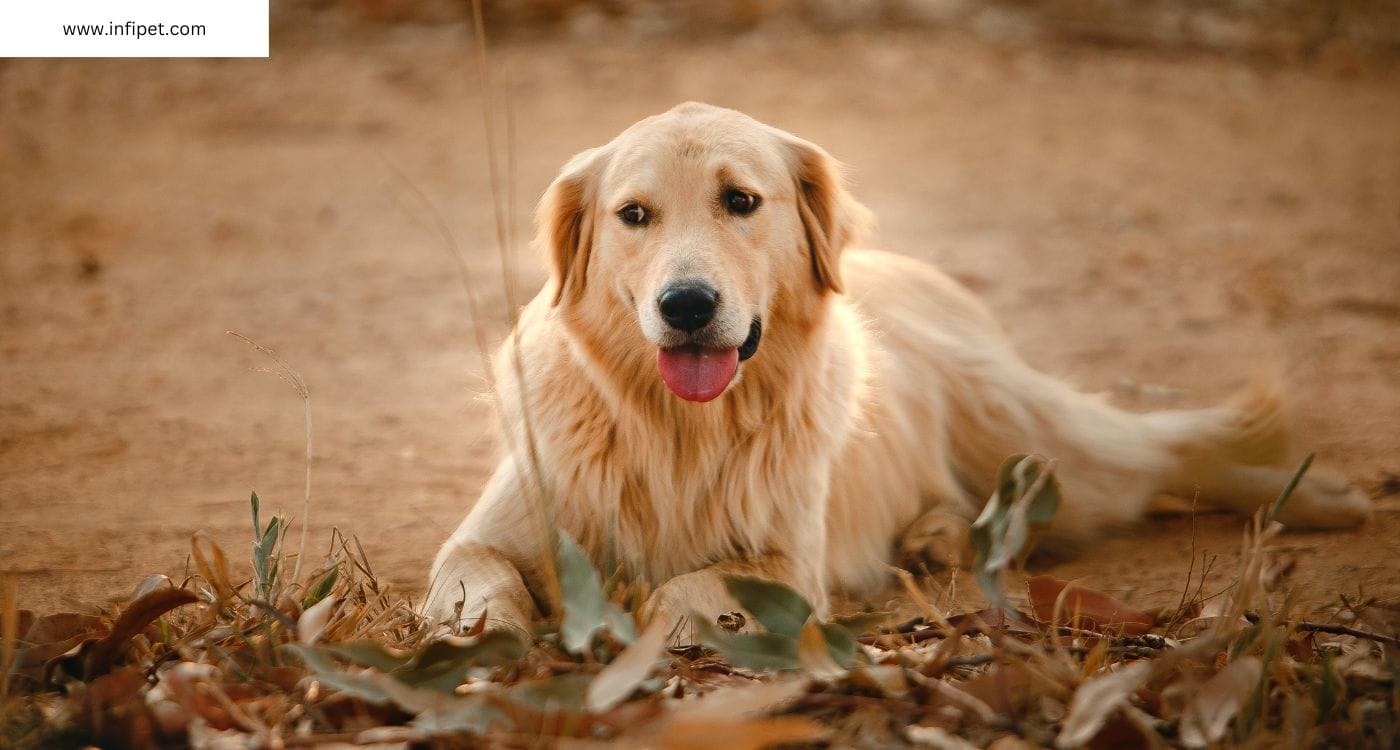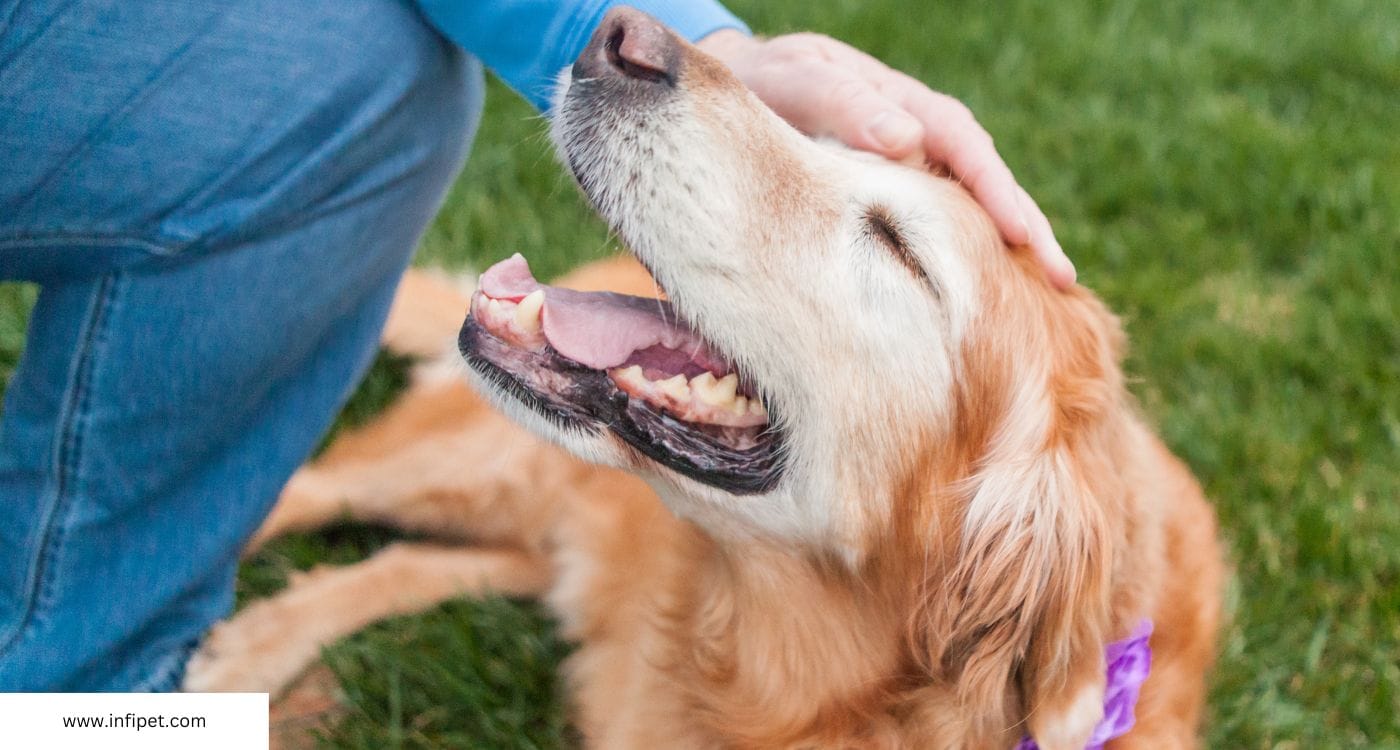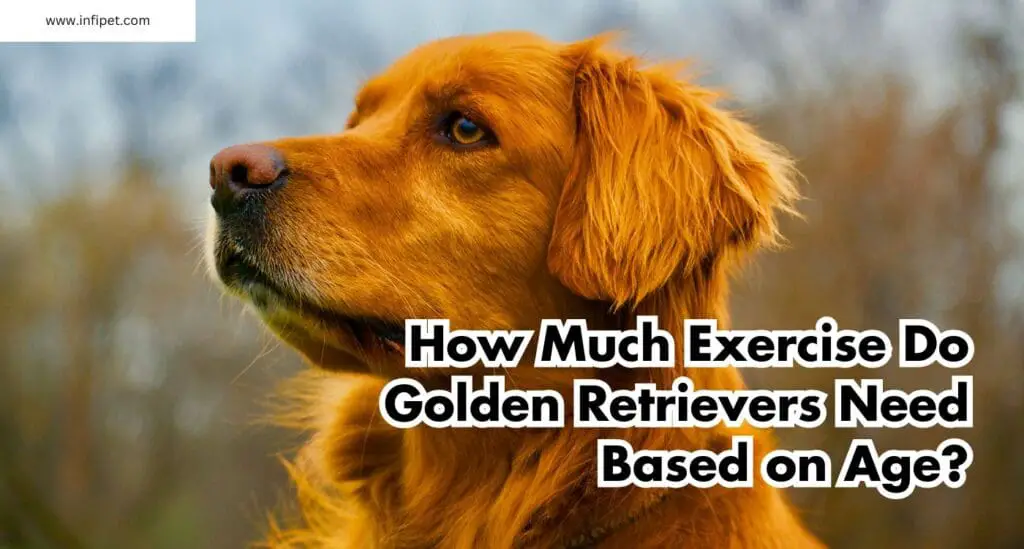Golden Retrievers are beloved family pets known for their friendly nature and energetic disposition. Understanding the exercise needs of these dogs is crucial to ensuring their overall health and well-being. In this article, we will delve into the specific exercise requirements of Golden Retrievers based on their age, addressing the question, “How Much Exercise Do Golden Retrievers Need?“
Exercise plays a vital role in the life of a Golden Retriever, impacting their physical fitness, mental stimulation, and behavior. Tailoring exercise routines to the age of your Golden Retriever is essential for maintaining their health and happiness throughout their life stages.
Whether you have a playful puppy, an active adolescent, a mature adult, or a senior companion, each age group has unique exercise needs that must be met to support their vitality and longevity.
By understanding the importance of age-specific exercise for Golden Retrievers, you can provide them with the appropriate physical activity levels to keep them healthy and thriving. Let’s explore the exercise requirements for Golden Retrievers at different life stages to ensure they lead a fulfilling and active lifestyle.
Table of contents
- The Importance of Exercise for Golden Retrievers
- Exercise Needs for Golden Retriever Puppies (0-6 Months)
- Exercise Needs for Adolescent Golden Retrievers (6-18 Months)
- Exercise Needs for Adult Golden Retrievers (18 Months – 7 Years)
- Exercise Needs for Senior Golden Retrievers (7 Years and Older)
- Factors Influencing Exercise Needs
- Signs of Over-Exercising and Under-Exercising
- Tips for Safe and Effective Exercise
- Conclusion
- Additional Resources
The Importance of Exercise for Golden Retrievers
Regular exercise is crucial for Golden Retrievers of all ages, ensuring their overall well-being and vitality. “How Much Exercise Do Golden Retrievers Need?” is a common question among dog owners, emphasizing the importance of physical activity for these beloved pets.
For Golden Retrievers, exercise goes beyond just physical fitness; it plays a significant role in their mental stimulation and behavior. Engaging in regular exercise helps maintain a healthy weight, strengthens muscles, and improves cardiovascular health. Additionally, it provides mental stimulation, reducing boredom and preventing destructive behaviors that may arise from excess energy.
Moreover, exercise is essential for promoting good behavior in Golden Retrievers. A well-exercised dog is more likely to exhibit positive behaviors, such as reduced anxiety and aggression, and improved focus and obedience. By meeting their exercise needs, you can foster a strong bond with your Golden Retriever and ensure a harmonious relationship based on trust and companionship.
Exercise Needs for Golden Retriever Puppies (0-6 Months)
Golden Retriever puppies, aged 0-6 months, have specific exercise needs that are crucial for their growth and development. Understanding the importance of proper exercise at this young age is essential for their overall well-being. Puppies at this stage are full of energy and curiosity, requiring regular physical activity to help them build strong muscles, bones, and coordination.
Engaging in activities that promote gentle exercise, such as short walks, interactive play sessions, and basic training exercises, is ideal for Golden Retriever puppies. These activities not only help them burn off excess energy but also stimulate their minds and encourage socialization. It’s important to keep the exercise sessions short and fun to prevent overexertion and ensure their safety.
As a responsible pet owner, it’s crucial to balance exercise with rest to support their growth and prevent any potential joint issues. Monitoring their behavior and energy levels can help you gauge the appropriate duration and frequency of exercise sessions. By providing structured and age-appropriate activities, you can lay a solid foundation for a healthy and active lifestyle for your Golden Retriever puppy.
Exercise Needs for Adolescent Golden Retrievers (6-18 Months)
As Golden Retrievers transition from puppies to adolescents, their exercise needs evolve to support their growth and development during this crucial stage. At 6-18 months, these young dogs are full of energy and enthusiasm, requiring a balance of physical activity and mental stimulation to keep them healthy and happy.

During this period, it’s essential to engage adolescent Golden Retrievers in activities that promote their physical well-being while considering their changing bodies. Long walks, interactive games like fetch, and obedience training are excellent ways to channel their energy constructively. These activities not only help them stay fit but also enhance their mental agility and social skills.
To ensure a healthy balance between exercise and growth, it’s important to monitor their progress closely. Adjusting the intensity and duration of activities as they grow is crucial to prevent overexertion and potential joint issues. Providing a mix of aerobic exercises, strength training, and mental challenges can help adolescent Golden Retrievers develop into well-rounded and healthy adults.
By incorporating a variety of activities that cater to their physical and mental needs, you can help your adolescent Golden Retriever build a strong foundation for a lifetime of health and vitality. Remember, consistency and moderation are key when it comes to exercising these young dogs to ensure their well-being and happiness as they continue to mature.
Exercise Needs for Adult Golden Retrievers (18 Months – 7 Years)
As adult Golden Retrievers enter the prime of their lives, maintaining an appropriate exercise routine is crucial for their overall health and well-being. These dogs, aged between 18 months and 7 years, require a balance of physical activities to keep them fit, mentally stimulated, and happy. Regular exercise not only helps them maintain a healthy weight but also supports their muscle tone and joint health.
Engaging adult Golden Retrievers in activities such as brisk walks, jogging, swimming, and interactive play sessions like tug-of-war can help fulfill their exercise needs. These types of exercises cater to their high energy levels and playful nature while promoting cardiovascular health and muscle strength. Additionally, incorporating mental challenges like puzzle toys or obedience training can keep their minds sharp and engaged.
To ensure a consistent exercise routine, it’s essential to schedule daily activities and stick to a regular schedule. Consistency is key in meeting the exercise requirements of adult Golden Retrievers. By providing a mix of physical and mental stimulation, you can help your furry companion lead a fulfilling and healthy life during their adult years.
Exercise Needs for Senior Golden Retrievers (7 Years and Older)
As Golden Retrievers reach their senior years at 7 years and older, their exercise needs undergo significant changes. It’s crucial to adapt their physical activities to accommodate their aging bodies while still promoting their overall well-being. Senior Golden Retrievers may not have the same energy levels as when they were younger, so it’s important to focus on low-impact exercises that are gentle on their joints and muscles.
One key aspect to consider when exercising senior Golden Retrievers is their health conditions. Just like humans, older dogs may develop arthritis, hip dysplasia, or other age-related issues that can affect their mobility and comfort. It’s essential to monitor your senior Golden Retriever closely during exercise and adjust the intensity and duration based on their individual health needs. Consulting with your veterinarian can help tailor a suitable exercise plan that takes into account any existing health conditions.
Low-impact activities such as leisurely walks, gentle swimming, and short play sessions can help senior Golden Retrievers stay active without putting too much strain on their bodies. These exercises promote circulation, maintain muscle tone, and provide mental stimulation without causing excessive stress on their joints. Additionally, incorporating stretching exercises can help improve flexibility and reduce the risk of injuries in older dogs.
By understanding the changing exercise needs of senior Golden Retrievers and adapting their routines accordingly, you can ensure that your beloved companion enjoys a comfortable and fulfilling life in their golden years. Regular, tailored exercise not only supports their physical health but also strengthens the bond between you and your loyal furry friend.
Factors Influencing Exercise Needs
When determining the exercise needs of your Golden Retriever, it’s crucial to consider various factors that can significantly impact their requirements. Individual aspects such as health, weight, and temperament play a vital role in shaping the ideal exercise routine for your furry companion.
- Health is a primary consideration when planning your Golden Retriever’s physical activities. Dogs with underlying health conditions may require modified exercise plans to prevent exacerbating their issues. For instance, a dog with arthritis may benefit from gentle, low-impact exercises to maintain mobility without causing discomfort.
- Weight is another key factor to address. Overweight Golden Retrievers may need more structured and calorie-burning exercises to help them shed excess pounds and improve overall health. On the other hand, underweight dogs might require activities that focus on building muscle mass and strength.
- Temperament also influences exercise needs. Energetic and playful Golden Retrievers may thrive on activities that challenge them mentally and physically, such as agility training or interactive games. In contrast, more laid-back dogs may prefer leisurely walks or relaxed play sessions.

By understanding how these individual factors interact and tailoring your Golden Retriever’s exercise regimen accordingly, you can ensure they receive the right amount and type of physical activity to support their well-being and happiness.
Signs of Over-Exercising and Under-Exercising
Over-Exercising
Golden Retrievers are known for their boundless energy and enthusiasm, but it’s essential to be mindful of signs that they may be over-exercising. One common indicator is excessive fatigue or reluctance to engage in physical activities they usually enjoy. If your furry friend seems unusually tired, limps, or shows signs of pain during or after exercise, it might be a sign that they are pushing themselves too hard. Additionally, if your Golden Retriever is panting excessively, drooling excessively, or experiencing difficulty breathing, these could be signs of over-exertion.
To address over-exercising, it’s crucial to adjust the intensity and duration of their activities. Consider incorporating more rest breaks during playtime or opting for low-impact exercises like swimming to reduce strain on their joints. Monitoring their behavior and physical cues during exercise can help you tailor their routine to ensure a balanced and safe workout regimen.
Under-Exercising
On the flip side, signs of under-exercising in Golden Retrievers can manifest as restlessness, destructive behavior, weight gain, or even depression. If your dog seems bored, lacks enthusiasm, or exhibits pent-up energy, they may not be getting enough physical activity. Reduced muscle tone, excessive barking, or pacing can also indicate a lack of exercise.
To combat under-exercising, it’s important to increase the frequency and intensity of their workouts gradually. Engage them in stimulating activities like fetch, brisk walks, or interactive toys to keep them mentally and physically engaged. Regular exercise not only helps maintain their physical health but also contributes to their mental well-being and overall happiness.
By recognizing the signs of both over-exercising and under-exercising in your Golden Retriever, you can make informed adjustments to their exercise routine, ensuring they receive the optimal amount of physical activity to support their health and vitality.
Tips for Safe and Effective Exercise
Golden Retrievers are active and playful companions, requiring adequate exercise to maintain their physical and mental well-being. When engaging in physical activities with your Golden Retriever, safety should always be a top priority. To ensure safe and effective exercise sessions, consider these essential tips.
- First and foremost, hydration is key. Just like humans, dogs need to stay hydrated during exercise. Always have fresh water available for your furry friend, especially during outdoor activities or on hot days. Proper hydration helps prevent overheating and ensures your Golden Retriever can enjoy their workout comfortably.
- Additionally, investing in the right gear is crucial. A well-fitted collar or harness, along with a sturdy leash, can help you maintain control and keep your dog safe during walks or runs. Reflective gear is also important for evening or early morning outings to enhance visibility and safety.
- Lastly, consider weather conditions before heading out. Extreme heat or cold can impact your dog’s ability to exercise comfortably. On hot days, opt for early morning or evening walks to avoid the peak temperatures. In colder weather, protect your Golden Retriever with a coat or sweater to keep them warm during outdoor activities.
By prioritizing hydration, proper gear, and weather considerations, you can ensure that your Golden Retriever enjoys safe and effective exercise tailored to their age and needs.
Conclusion
The “Conclusion” of this article highlights the significance of tailoring exercise routines to meet the age-specific needs of Golden Retrievers. From energetic puppy play to gentle activities for senior dogs, adapting workouts to their life stage is crucial for their well-being. Regular, age-appropriate exercise plays a vital role in maintaining their overall health and happiness.

Throughout this guide, we have stressed the importance of understanding and meeting the exercise requirements of Golden Retrievers at different life stages. Whether it’s engaging in lively play sessions or leisurely walks, fulfilling their unique needs is essential for a healthy and fulfilling life.
Collaborating with a veterinarian is strongly advised to create a personalized exercise plan that suits your Golden Retriever’s individual needs. Veterinarians can provide valuable guidance on the best exercise regimen based on factors like age, health status, and activity level. By working together with your vet, you can ensure that your Golden Retriever receives the right amount and type of exercise to thrive throughout their lifespan.
Additional Resources
For Golden Retriever owners seeking more information on tailoring exercise routines to their beloved pets’ needs, there are several valuable resources available. “How Much Exercise Do Golden Retrievers Need” is a common question among dog owners, and understanding the specific requirements based on age is crucial.
One excellent resource to explore is the American Kennel Club‘s website, which offers detailed insights into Golden Retriever care, including exercise guidelines for different life stages. Additionally, the book “Golden Retrievers for Dummies” provides comprehensive information on all aspects of Golden Retriever ownership, including exercise recommendations and tips for maintaining their health and well-being.
By delving into these resources, Golden Retriever owners can gain a deeper understanding of their pets’ exercise needs and ensure they are providing the appropriate level of physical activity for optimal health and happiness.


